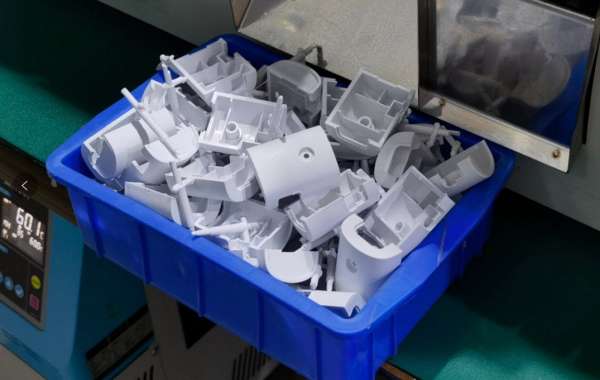Introduction: The Significance of Injection Molding in Manufacturing
Injection molding is one of the most widely used manufacturing processes in industries ranging from automotive and medical to consumer products and electronics. This method involves injecting molten material into a mold to create a wide variety of parts, ranging from small and simple components to complex, high-precision items. Its high efficiency, ability to produce large quantities of parts, and versatility make injection molding a popular choice for mass production.
However, like any manufacturing process, injection molding comes with its costs. Understanding injection molding cost is crucial for businesses looking to optimize their production processes, maximize profits, and maintain competitive pricing. This article explores the factors that influence injection molding costs, how to manage those costs effectively, and best practices for reducing expenses in injection molding projects.
1. What is Injection Molding?
Before delving into the cost factors, it’s important to understand the injection molding process itself. Injection molding involves the following key steps:
- Material Preparation: A material (typically plastic, but also metals, rubber, or ceramics) is prepared by melting or softening it to a liquid state.
- Injection: The molten material is injected under high pressure into a mold cavity.
- Cooling and Solidifying: Once the material fills the mold, it is cooled and solidified into the shape of the desired part.
- Ejection: After cooling, the part is ejected from the mold, and the process repeats.
Injection molding allows for high-precision and repeatable parts, making it ideal for mass production, especially when a consistent level of quality is required.
2. Key Factors Influencing Injection Molding Cost
While injection molding is cost-effective for high-volume production, the initial costs associated with the process can be substantial. The cost of injection molding can vary depending on a variety of factors, which we will explore in detail.
a) Tooling and Mold Costs
One of the most significant costs in injection molding is the creation of molds. Molds are typically made of steel or aluminum and are custom-designed for each specific part. The complexity and size of the part, as well as the material being used, will directly impact the mold cost.
- Complexity: More complex parts require intricate molds, which can increase the cost. Features like undercuts, fine details, or multi-cavity molds can make the mold manufacturing process more difficult and expensive.
- Material: Steel molds are more expensive but have a longer lifespan compared to aluminum molds. While aluminum molds are less costly upfront, they may wear out faster, especially with high-volume production.
- Size of the Part: Larger parts require larger molds, which increases the overall tooling cost.
Although tooling costs can be high, they are amortized over a large production run, making the cost per part lower with higher volumes. Therefore, mold costs are typically a one-time investment, but their impact on the overall cost structure needs to be considered during the planning stage.
b) Material Costs
The choice of material used in injection molding can also have a significant impact on the cost. Materials vary greatly in price depending on their properties, availability, and processing difficulty. Common injection molding materials include:
- Plastics: The most commonly used materials in injection molding are thermoplastics, such as ABS, polypropylene, and polyethylene, as well as engineering plastics like nylon and polycarbonate. These materials differ in terms of cost, strength, and performance characteristics.
- Elastomers: Rubber and silicone materials may also be used for injection molding, typically in products requiring flexibility and durability. These materials are often more expensive than standard plastics.
- Composites: Some injection molded parts require composite materials that include fibers like glass or carbon, which can increase material costs.
Material costs depend on the type and grade of the material, as well as the volume required. Additionally, material waste (such as sprue, runners, and other excess material) must also be factored in, as it can add to overall costs.
c) Production Volume
The number of parts produced in an injection molding run plays a crucial role in determining the overall cost. Injection molding is generally most cost-effective for high-volume production, as the cost per part decreases as the number of parts increases. This happens because the initial costs for tooling are spread over a larger number of parts.
- Low-Volume Production: For small production runs or prototyping, injection molding can be relatively expensive because the cost of creating the mold is not distributed over many units. In these cases, alternative methods like 3D printing or CNC machining may be more cost-effective.
- High-Volume Production: For large production runs, the cost per part significantly decreases as tooling and setup costs are amortized over the many parts produced. In these cases, injection molding is highly efficient and offers economies of scale.
Therefore, businesses should consider their production volume when estimating the overall cost of injection molding and determine if it is the most appropriate process for their needs.
d) Cycle Time and Production Speed
The cycle time in injection molding refers to the amount of time it takes to complete one full production cycle, including injection, cooling, and ejection of the part. Faster cycle times mean that more parts can be produced in a shorter amount of time, reducing the cost per part.
Several factors affect cycle time:
- Part Design: Simpler designs with fewer features tend to have shorter cycle times, whereas parts with complex geometry or thick walls take longer to cool and may increase cycle times.
- Material: Some materials, such as thermosets or filled plastics, have longer cooling times than others, which can increase the cycle time.
- Mold Design: Molds with multiple cavities or advanced cooling systems can reduce cycle times and improve production speed.
Reducing cycle time can improve the overall efficiency of the injection molding process, lowering the cost per part and enabling higher throughput.
e) Labor Costs
While labor costs in injection molding are generally lower compared to other manufacturing processes, the level of automation involved in the process can influence labor expenses. Automated systems, such as robotic arms for part removal or mold loading, can reduce the need for manual labor and increase the speed and consistency of the production process. This, in turn, can lower labor costs.
For businesses that choose to manufacture in regions with higher labor costs, labor can become a significant factor in the overall cost structure. Conversely, injection molding services in countries with lower labor costs (such as China, Mexico, or Eastern European countries) may offer savings on labor-intensive processes.
3. How to Manage Injection Molding Costs Effectively
To maximize the benefits of injection molding and manage costs effectively, businesses should consider several strategies:
a) Optimize Part Design
Designing parts that are easy to mold can significantly reduce injection molding costs. Simplifying part geometry, minimizing undercuts, and ensuring uniform wall thickness can help reduce both mold complexity and cycle time, leading to cost savings. Collaboration with experienced engineers and designers during the early stages of development can help optimize designs for efficient molding.
b) Choose the Right Materials
Selecting the most cost-effective material for your part is crucial in controlling injection molding costs. While premium materials may offer superior performance, they can significantly increase material costs. Businesses should carefully evaluate material properties such as strength, flexibility, and thermal resistance to ensure they choose the right material for both performance and cost.
c) Increase Production Volume
If the design is finalized and tooling costs have been paid, increasing production volume can dramatically lower the cost per part. For long-term projects or products that are expected to sell in high volumes, investing in injection molding may be a very cost-effective solution.
d) Invest in High-Quality Molds
While the upfront cost of high-quality molds may be higher, they typically last longer and require fewer repairs, reducing long-term costs. Choosing the right mold material (e.g., steel over aluminum for higher volumes) and ensuring proper mold maintenance can help minimize costly downtime and repairs.
4. Conclusion: Making Informed Decisions on Injection Molding Costs
Injection molding is a versatile and cost-effective manufacturing process for high-volume production, but its costs can vary depending on several factors, including tooling, material, production volume, and cycle time. To ensure the process is as cost-effective as possible, businesses must carefully evaluate these factors and make informed decisions based on their specific needs.
By understanding the intricacies of injection molding cost and taking steps to optimize design, materials, and production processes, companies can successfully manage costs while achieving high-quality, consistent parts. With proper planning and consideration, injection molding can be a highly efficient and economical manufacturing solution for a wide range of industries.




